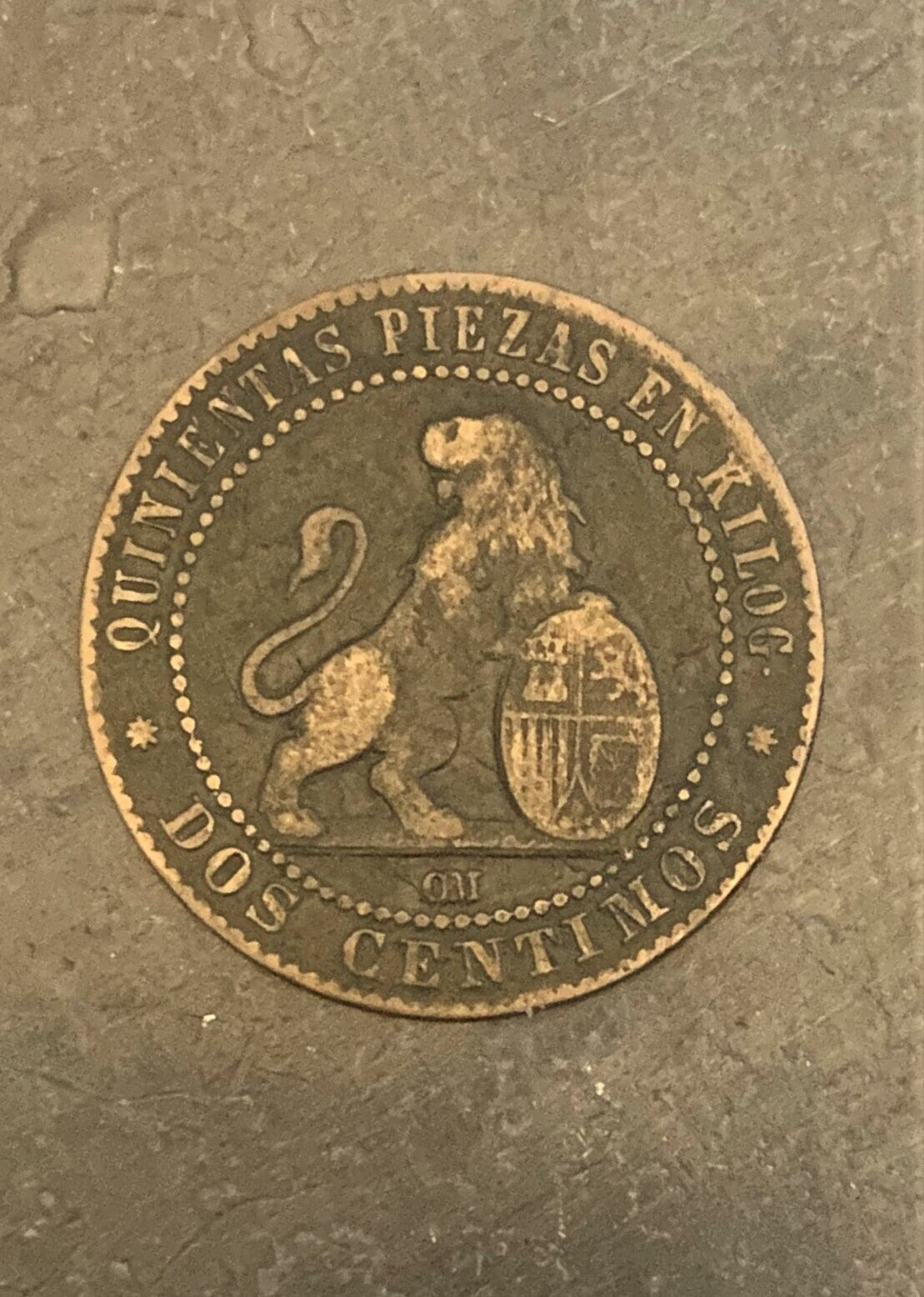1
/
из
3
1870 2 Cetimos - Dos Centimos - 2 Cents - Bronze - Collectors Coin - Spain
1870 2 Cetimos - Dos Centimos - 2 Cents - Bronze - Collectors Coin - Spain
Количество
Обычная цена
$16.19
Обычная цена
Цена со скидкой
$16.19
Налоги включены.
1870 2 Cetimos. One of the very few Spanish modern coins with no reference to the country name
Obverse: Beaded inner circle with Hispania seated on the Pyrenees mountains, pointing to right
Reverse: Beaded inner circle with a lion standing, front paws resting on a shield on right
Reverse Lettering:
QUINIENTAS PIEZAS EN KILOG.
DOS CENTIMOS
Translation:
FIVE HUNDRED PIECES PER KILOG.
TWO CENTS
Issuer Spain
Period Provisional Government (1868-1871)
Type Standard circulation coin
Year 1870
Value 2 Centimos (0.02 ESP)
Currency Peseta (1868-2001)
Composition Bronze (Copper 950, Tin 40, Zinc 10)
Weight 2 g (original weight at time of production)
Diameter 20 mm
Thickness 0.7 mm
Demonetized 20 October 1941. When a country decides to change its currency, it does so through the process of demonetization. The meaning of demonetization of currency involves removing the currency’s value as legal tender. To do this, banknotes and coins are removed from circulation and replaced with new ones. This coin is a survivor.
Obverse: Beaded inner circle with Hispania seated on the Pyrenees mountains, pointing to right
Reverse: Beaded inner circle with a lion standing, front paws resting on a shield on right
Reverse Lettering:
QUINIENTAS PIEZAS EN KILOG.
DOS CENTIMOS
Translation:
FIVE HUNDRED PIECES PER KILOG.
TWO CENTS
Issuer Spain
Period Provisional Government (1868-1871)
Type Standard circulation coin
Year 1870
Value 2 Centimos (0.02 ESP)
Currency Peseta (1868-2001)
Composition Bronze (Copper 950, Tin 40, Zinc 10)
Weight 2 g (original weight at time of production)
Diameter 20 mm
Thickness 0.7 mm
Demonetized 20 October 1941. When a country decides to change its currency, it does so through the process of demonetization. The meaning of demonetization of currency involves removing the currency’s value as legal tender. To do this, banknotes and coins are removed from circulation and replaced with new ones. This coin is a survivor.
Не удалось загрузить сведения о доступности самовывоза






